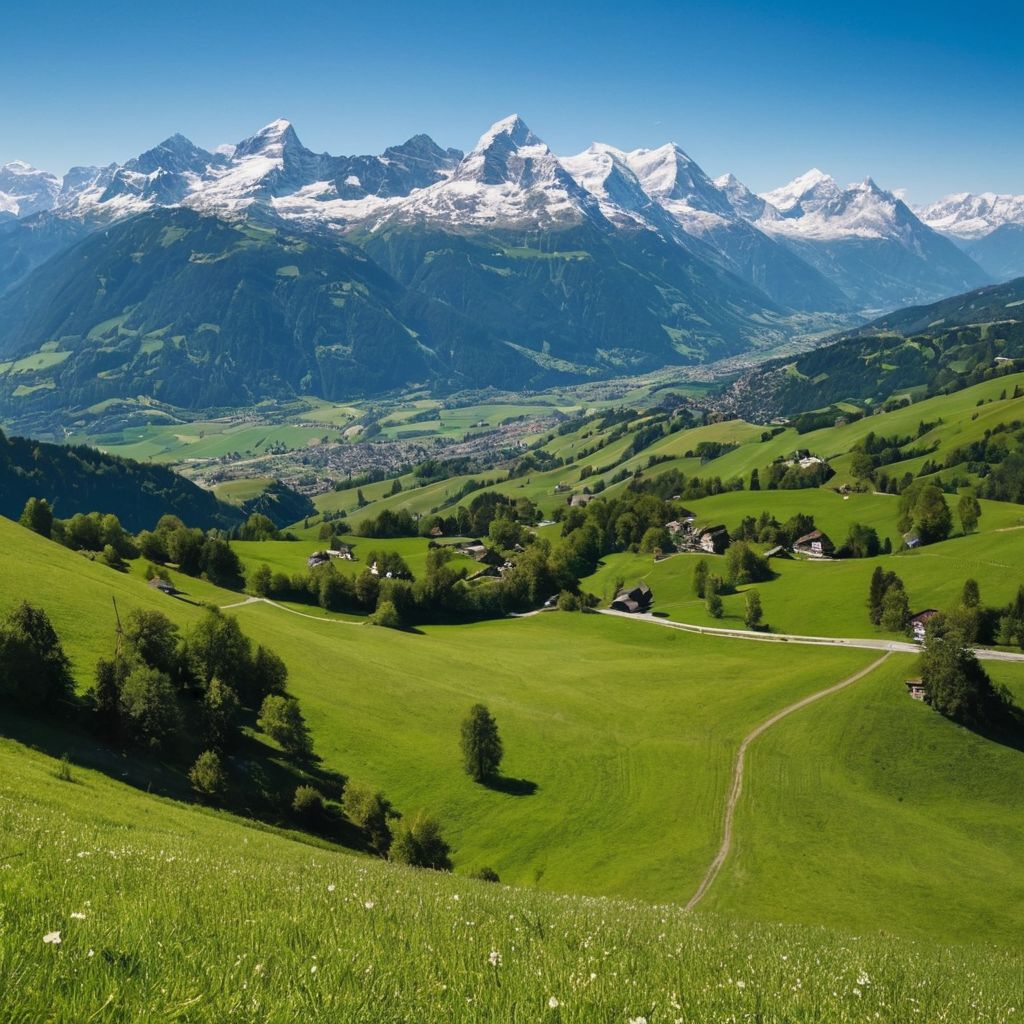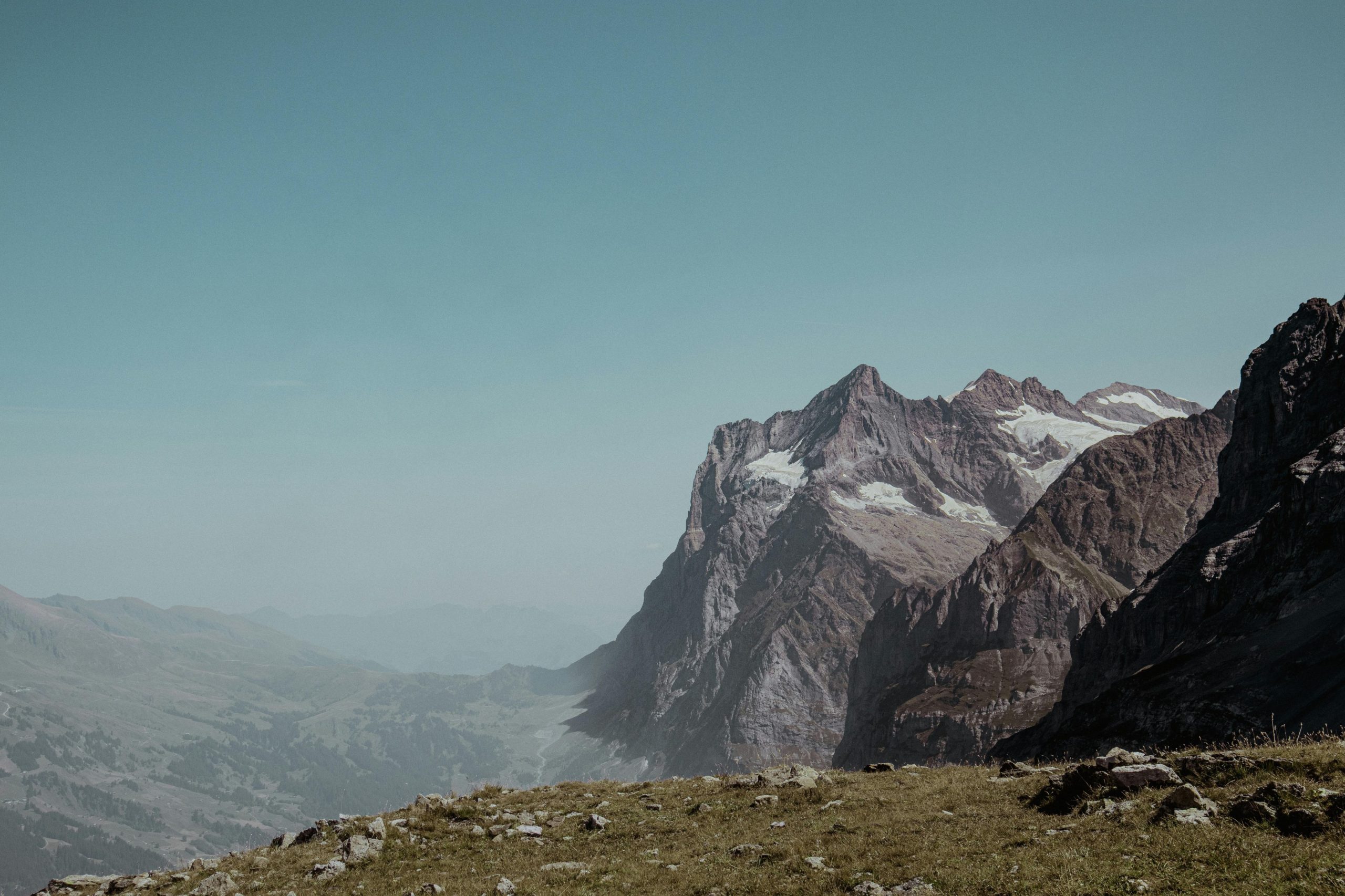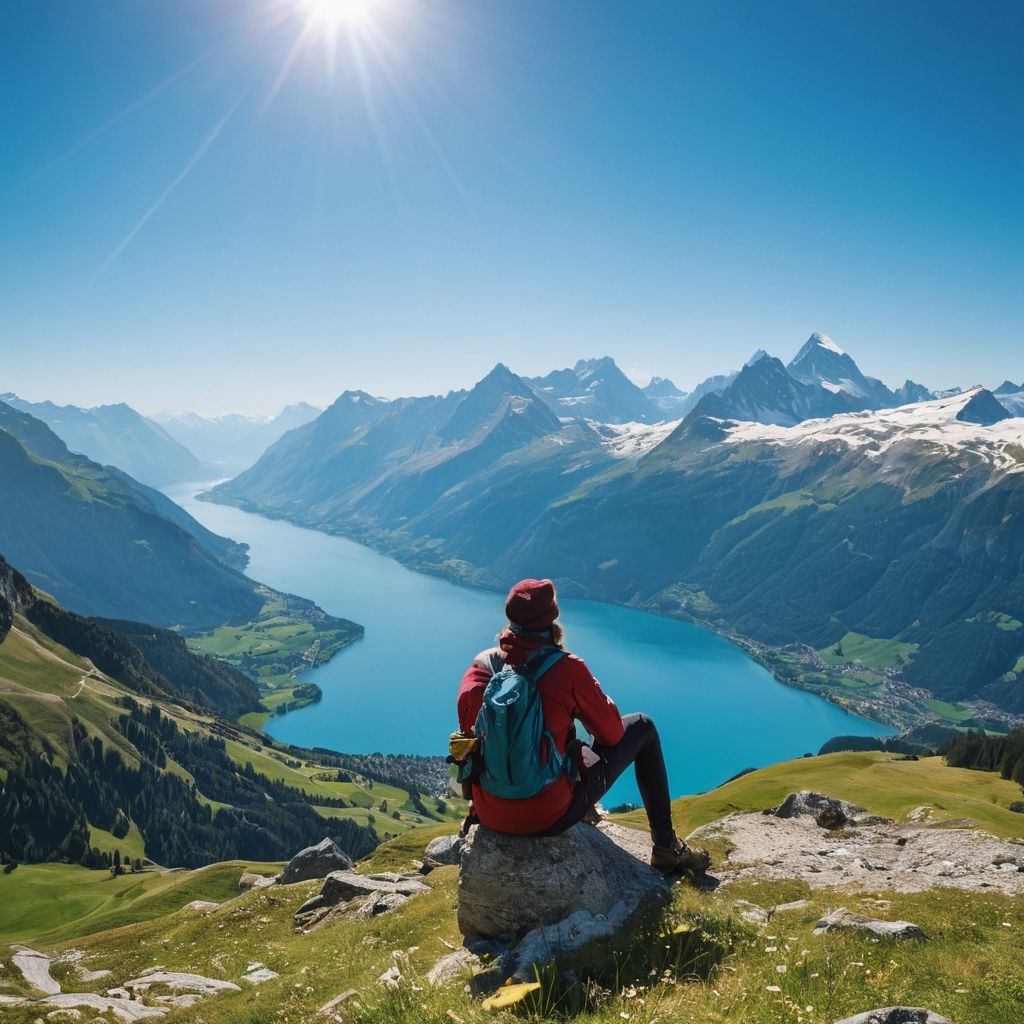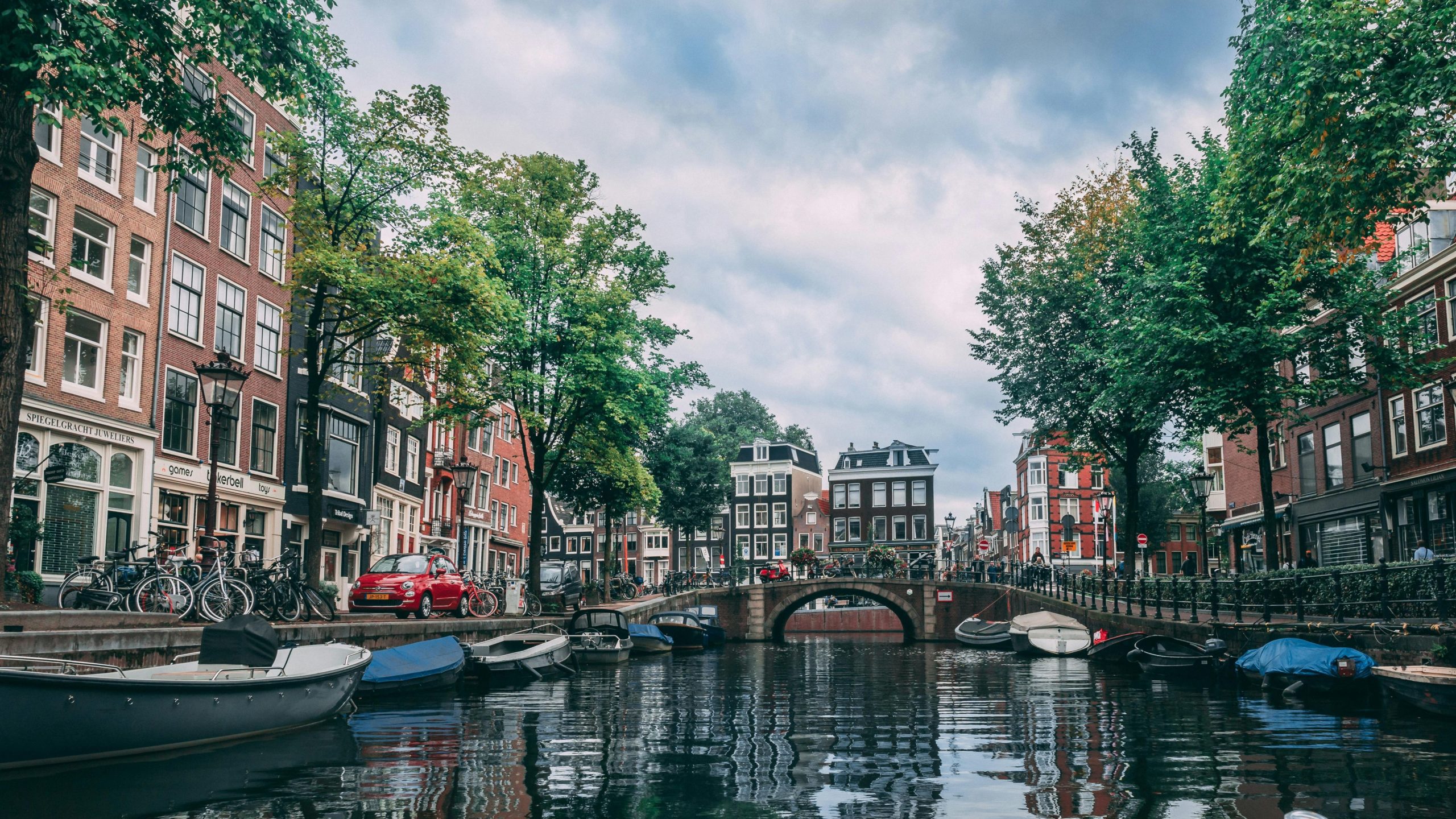Dreaming of a picturesque escape into the heart of Europe?
Planning a trip that covers both Switzerland and Austria can be overwhelming, with so many stunning places to see and things to do.
If you’re an EU citizen, you’ll need just your Schengen visa to travel freely between these two beautiful countries; non-EU citizens will also find it hassle-free with a Schengen visa.
In this blog, we’ll guide you through crafting a perfect itinerary, navigating transportation, exploring top attractions, and providing essential travel tips to make your Switzerland and Austria adventure unforgettable.
Crafting Your Itinerary for Switzerland and Austria

Crafting a travel itinerary for Switzerland and Austria involves balancing a mix of stunning landscapes, rich history, and vibrant culture. Start by identifying the key cities and attractions you want to visit in each country. In Switzerland, Zurich, Lucerne, and the Swiss Alps are essential stops, while in Austria, Vienna, Salzburg, and Innsbruck offer a blend of music, art, and architecture. Consider the length of your stay and travel distances between these locations to ensure a realistic and enjoyable schedule.
When planning your itinerary, think about the experiences that matter most to you. Whether it’s hiking in the majestic Swiss Alps, exploring the historic streets of Salzburg, or enjoying a boat ride on Lake Geneva, each activity will shape your travel days. Here are some itinerary suggestions:
- Day 1-2: Explore Zurich’s old town and nearby Rhine Falls.
- Day 3-5: Visit Lucerne, Mount Pilatus, and take a day trip to the Swiss Alps.
- Day 6-8: Discover Vienna’s imperial history and vibrant cultural scene.
- Day 9-10: Relax in Salzburg, visiting Mozart’s birthplace and nearby Neuschwanstein Castle.
Lastly, consider the pace of your journey. Mixing busy sightseeing days with relaxed days will enhance your travel experience, preventing burnout. Allocate time for spontaneous exploration or rest, especially after long travel days. This balanced approach will leave you with richer memories and a more authentic experience of both Switzerland and Austria.
Navigating Transportation in Switzerland and Austria
Navigating transportation in Switzerland and Austria is straightforward thanks to their efficient and comprehensive public transport systems. Trains, such as the Swiss Rail and Austria’s ÖBB, offer extensive networks that connect major cities and scenic routes with high-speed and regular services. For example, the Railjet connects Vienna to Zurich in about eight hours, offering beautiful views of the countryside.
Besides trains, consider other modes of transportation like buses and rental cars, which offer flexibility for exploring off-the-beaten-path areas. For scenic drives, the route from Salzburg to Innsbruck provides breathtaking views of the Alps. However, for city tours, public transport is often more convenient and cost-effective. Always check timetables in advance, and consider purchasing travel passes such as the Swiss Travel Pass or the Austria Card for unlimited travel and additional discounts.
Top Activities and Attractions in Switzerland and Austria
Switzerland and Austria are filled with top attractions that cater to all interests. In Switzerland, no trip is complete without seeing the Matterhorn, exploring the Aletsch Glacier, and experiencing the panoramic views from Jungfraujoch. These natural wonders offer opportunities for photography, hiking, and simply enjoying the breathtaking landscapes.
In Austria, cultural enthusiasts will enjoy visiting historic sites like Vienna’s Schönbrunn Palace, Salzburg’s Mirabell Palace, and Innsbruck’s Old Town. For a unique experience, explore the salt mines near Salzburg or attend a performance at the Vienna State Opera. Each location offers a deep dive into Austria’s rich history and cultural offerings.
Travel Tips for a Smooth Switzerland and Austria Trip
Traveling smoothly through Switzerland and Austria requires some practical tips. First, consider the timing of your visit. Avoid peak tourist seasons, typically July and August, to escape the crowds and high prices. The shoulder seasons of spring and autumn offer pleasant weather and fewer tourists. Additionally, always carry some cash, as not all places accept credit cards, especially in rural or mountainous areas.
Budgeting wisely can also enhance your trip. Switzerland is known for being expensive, but you can save by dining at local supermarkets or choosing accommodation with kitchen facilities. In Austria, look for combo tickets for museums and attractions to reduce costs. Remember to respect local customs and etiquette, such as quiet hours in residential areas and proper attire when visiting religious sites, to ensure a respectful and enjoyable experience for everyone.
Visa Requirements for Switzerland and Austria
When planning your trip to Switzerland and Austria, understanding the visa requirements is crucial, especially if you’re not from an EU or EFTA country. Both Switzerland and Austria are part of the Schengen Area, which means a Schengen visa allows you to travel between these countries without additional visas. However, the application process and required documents can vary based on your nationality. For Switzerland, you may need to provide additional documents such as an invitation letter, proof of accommodation, and financial means. The invitation letter should be detailed, mentioning the purpose of your visit, your stay duration, and details about the host if you’re staying with one. Here are some key documents you typically need:
- A valid passport with at least two blank pages.
- Two recent passport-sized photographs.
- Travel itinerary and proof of accommodation.
- Proof of financial means, such as bank statements or a declaration of sponsorship.
For Austria, the requirements are similar, but always check the latest information from the Austrian embassy or consulate as regulations can change. If you’re applying for a visa to Austria, make sure to include travel health insurance that covers up to EUR 30,000. This insurance must be accepted by the Schengen states. The application should ideally be submitted at least 15 days before your intended travel date but not more than six months prior to your trip. Remember, if you’re planning to engage in any paid activity, like a short-term job or internship, you might need a specific type of visa. Here’s a quick checklist for your Austrian visa application:
- Completed and signed application form.
- Recent identity photograph conforming to ICAO standards.
- Travel document with at least two blank pages and valid for three months after your departure from the Schengen area.
- Proof of travel purpose, such as conference invitations or travel bookings.
Both countries also have provisions for expedited or online visa application processes in certain cases, which can simplify the submission and approval stages.
Language Tips for Traveling in Switzerland and Austria
Navigating the linguistic landscape of Switzerland and Austria can significantly enhance your travel experience. Switzerland, in particular, is a multilingual country with four national languages: German, French, Italian, and Romansh. However, Swiss German is the predominant language in many regions, and it differs quite a bit from Standard German (Hochdeutsch) spoken in Germany. For instance, a friendly greeting in Swiss German is “Grüezi” (for one person) or “Grüezi mitenand” (for a group), instead of the Standard German “Hallo.” When dining, saying “En Guete” before a meal is customary in Swiss German, akin to “Guten Appetit” in Germany. Here are a few more handy phrases:
- Wämmer eis go ziie? – Do you want to go for a drink?
- Merci Vilmal – Thanks a lot.
- Fröit mi – Pleased to meet you.
These phrases not only help in day-to-day interactions but also show respect for local customs and language.
In Austria, while the official language is German, the dialects can vary significantly from region to region. The standard form of German (Hochdeutsch) is widely understood and is used in formal settings, but engaging with locals in their dialect can be both a challenging and rewarding experience. For example, in Vienna, you might hear “Grüß Gott” as a common greeting, which is a more formal version of “hello.” When traveling through Austria, it’s also useful to know phrases like “Danke” (Thank you) and “Bitte” (Please). Additionally, understanding some basic terms can help in navigating local menus, signs, and travel directions. Here’s a quick list to get you started:
- Ich hätte gerne… – I would like…
- Wo ist der Bahnhof? – Where is the train station?
- Einmal, bitte – One, please.
By familiarizing yourself with these phrases, you can navigate local interactions more smoothly, making your journey through Switzerland and Austria not only easier but also more engaging.
Is 10 Days Enough for Switzerland and Austria?
Determining if a 10-day trip is sufficient to cover the highlights of Switzerland and Austria depends largely on what you want to see and do. For travelers aiming to soak in the iconic sights and cultural experiences of both countries, 10 days can be quite tight but manageable with careful planning. Switzerland, known for its breathtaking landscapes and outdoor activities, and Austria, celebrated for its rich history and vibrant cultural scene, both offer much to travelers. However, to truly appreciate the beauty and diversity of these locations, you might need to prioritize certain regions or cities over others. For instance, focusing on major urban centers like Zurich, Lucerne, Vienna, and Salzburg could provide a fulfilling yet brisk pace, allowing you to explore key attractions without feeling rushed.
If your travel goals include more than just the main attractions, or if you desire a more relaxed pace, extending your stay beyond 10 days could be beneficial. This would allow for deeper exploration of the countries’ hidden gems and local cultures. Here are some suggestions for adjusting your itinerary based on different trip durations:
- For a 10-day trip: Focus on two cities in each country and include day trips to nearby attractions.
- For a 15-day trip: Add more regional towns or scenic areas like the Swiss Alps or Austria’s lake district, which offer numerous outdoor activities and picturesque landscapes.
- For a 20-day trip: Include leisure days for spontaneous exploration, cultural immersion, and perhaps some local events or festivals if the timing aligns with your visit. This extended schedule reduces travel fatigue and enriches your experience with more personal and memorable interactions.
Enhance Your Trip with Indulge’s Culinary Tours in Zurich
Enhancing your travel experience in Switzerland isn’t just about the scenic mountains and historic sites; it’s also about diving into the rich culinary culture that Zurich has to offer. With INDULGE’s culinary tours, you can explore the city’s gastronomic delights in a unique and engaging way. These tours are designed to introduce food lovers to both traditional Swiss dishes and international cuisines, making every bite a discovery. Imagine walking through the charming streets of Zurich’s Old Town, guided by local experts, and savoring dishes like the iconic Zürcher Geschnetzeltes or indulging in a decadent Swiss chocolate tasting. This is more than just eating; it’s a learning experience that connects you with the history and culture of Zurich through its food.
INDULGE’s culinary tours not only cater to your taste buds but also offer a range of experiences that can fit seamlessly into any travel itinerary. Whether you’re looking for a quick introduction to Swiss cuisine with a 2.5-hour tour or an extensive 4-hour culinary adventure, there’s an option that suits your schedule. Here are some highlights you might enjoy:
- Exclusive Wine & Dine experiences in Zurich’s industrial heart, where you can enjoy multiple courses of gourmet foods paired with fine wines.
- Signature walking tours through historical areas, offering over 15 different tastings that introduce you to Swiss specialties and international flavors.
These tours are perfect for anyone wanting to deepen their understanding of Zurich’s culinary landscape while enjoying the company of like-minded food enthusiasts.
Frequently Asked Questions
Which month is best to visit Switzerland and Austria?
The best months to visit Switzerland and Austria are during the shoulder seasons of spring and autumn. These periods offer pleasant weather and fewer tourists compared to the peak tourist seasons of July and August.
Is Austria or Switzerland more expensive to visit?
Switzerland is known for being more expensive than Austria. Budgeting wisely, such as dining at local supermarkets or choosing accommodations with kitchen facilities, can help manage costs while in Switzerland.
How many days are enough for a Switzerland trip?
The number of days sufficient for a Switzerland trip depends on your travel goals. If you’re focusing on major cities like Zurich and Lucerne and including day trips to nearby attractions, a 10-day trip can be manageable. For a more relaxed pace or deeper exploration, extending your stay beyond 10 days could be beneficial.








